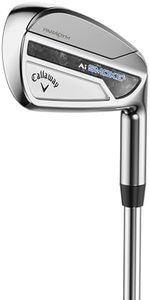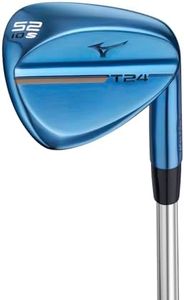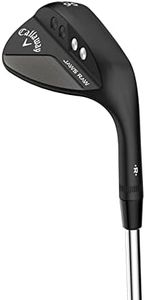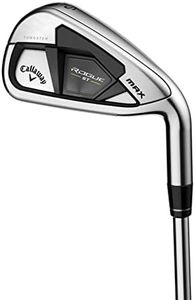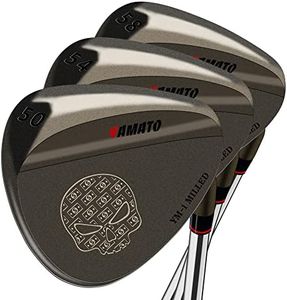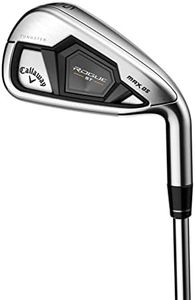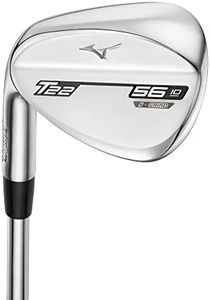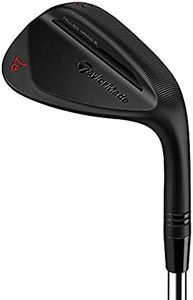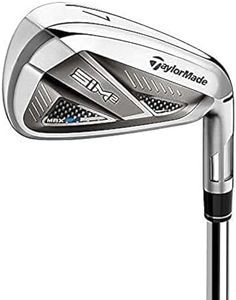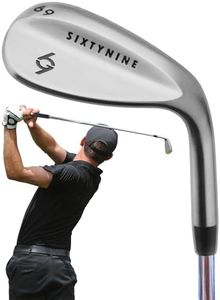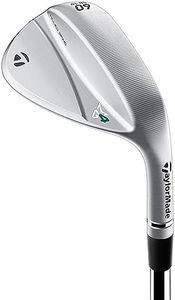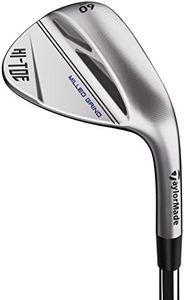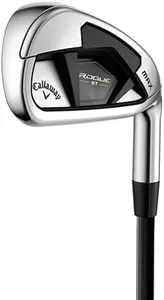We Use CookiesWe use cookies to enhance the security, performance,
functionality and for analytical and promotional activities. By continuing to browse this site you
are agreeing to our privacy policy
10 Best Golf Sand Wedges
From leading brands and best sellers available on the web.Buying Guide for the Best Golf Sand Wedges
Choosing the right sand wedge can make a big difference in your golf game, especially when facing tricky shots from bunkers or soft turf around the greens. Sand wedges offer unique design features that help you play these shots with more control and confidence. To pick the best fit, it pays to understand a few key elements that set wedges apart and how these features relate to your playing style and course conditions.LoftLoft is the angle of the clubface and it determines how high and how far the ball will fly when struck. In sand wedges, lofts typically range from about 54 to 58 degrees. Lower lofts (around 54 degrees) produce a slightly lower flight and more roll, while higher lofts (up to 58 degrees) create a higher, softer shot that lands more softly. To choose the right loft, consider the types of shots you encounter most—if you often play from deep bunkers or need to get the ball up quickly over obstacles, a higher loft wedge is useful. If you prefer a more versatile club that you can use for full swings and chip shots, a middle-range loft might be best.
BounceBounce refers to the angle between the sole (bottom) of the club and the ground when the club is held in a normal playing position. It helps the club glide through sand and turf rather than dig in. Sand wedges usually have more bounce (10-14 degrees), which is ideal for soft sand and fluffy turf. If you usually play in soft conditions or struggle with the club digging in, higher bounce will help. If you play on firmer courses or have a sweeping swing, a lower bounce might be preferable to prevent the club from bouncing off the ground too much.
Sole GrindSole grind describes the shape and contouring of the sole of the club. Different grinds affect how easily you can open or close the face, and influence how the wedge interacts with the turf or sand. More aggressive grinds with more shaping are helpful for skilled players who use various shots around the green, while more basic soles are reliable and forgiving for most golfers. When choosing, think about your swing type and the variety of shots you like to hit—if you like to get creative or play specialty shots, a grind with more options will suit you. If you want simplicity and predictability, a standard grind is ideal.
Shaft Material and FlexShaft material (steel or graphite) and flex (how much the shaft bends during the swing) can affect feel and consistency. Steel shafts are common for wedges, as they offer better control and feedback, which is helpful for short, touch shots. Flex is usually less of a concern in wedges than in longer clubs, but if you have a very slow or very fast swing, matching the shaft flex to your general club set can provide a more consistent feel. Most recreational players will do well with a regular steel shaft in their sand wedge.
Club Head FinishGolf wedges come in various surface finishes—chrome, raw, black, or other colors. While finish can affect appearance and, to a small extent, how the club spins or wears over time, it's mostly about personal preference and how the wedge looks behind the ball. Choose a finish that you find visually appealing and easy to align at address, keeping in mind that some finishes show wear more quickly or may reduce glare on sunny days.

